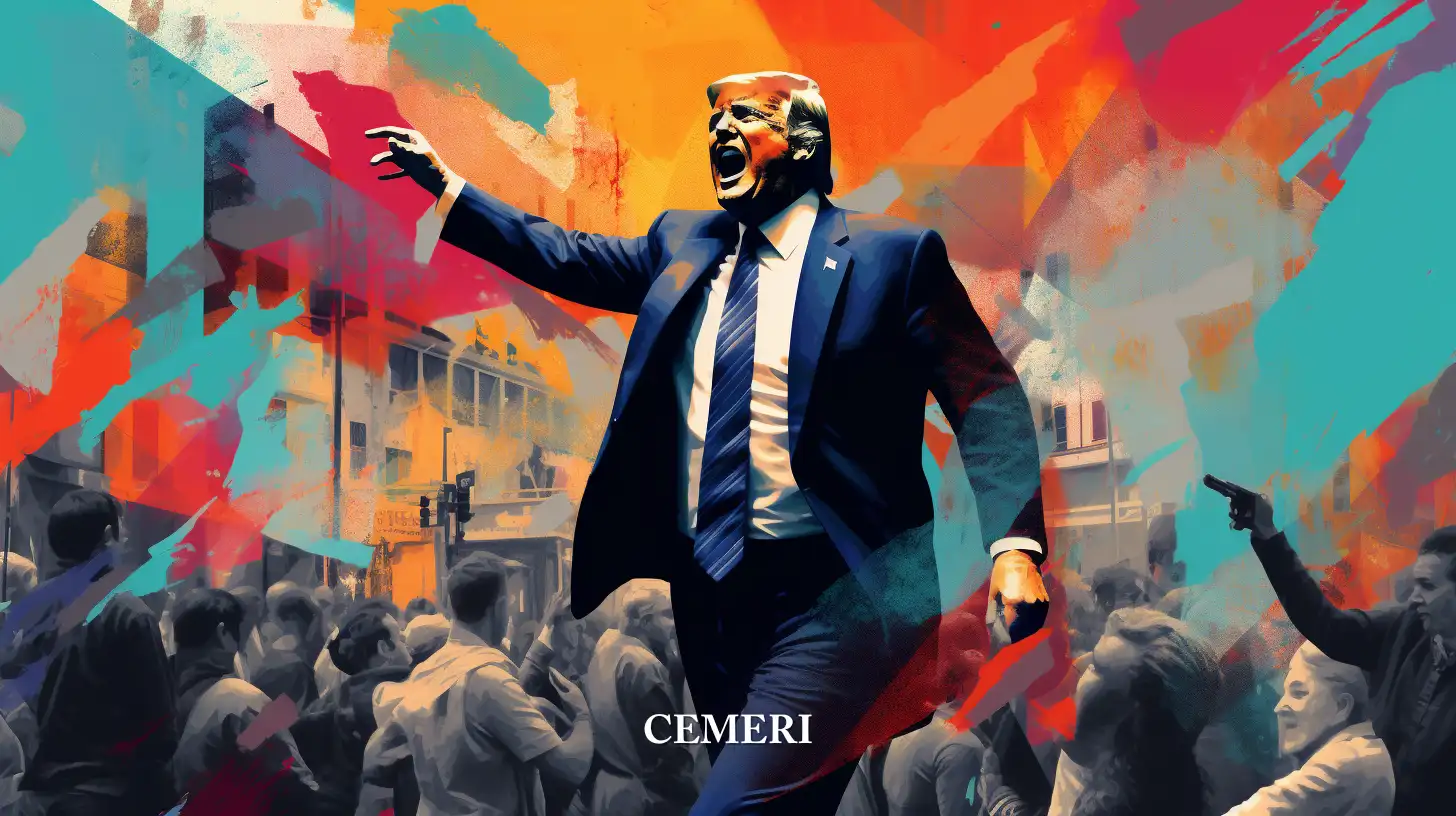Opinion
Luis González
The Trump legacy and white supremacist groups
- Donald Trump and white supremacist groups interview a problem that afflicts American society.

The renewal of the Federal Executive in the United States represents a valuable opportunity to reverse the policies that violate human rights and abandon the racist, xenophobic and misogynistic discourses of the outgoing president. In the first week of government alone, Joe Biden signed 21 executive orders, among which the re-entry of the US to the Paris Climate Agreement, the arrest of immigration policies that separated children from their parents or that prevented the entry to travelers from certain countries and the cancellation of the construction of the wall on the border with Mexico.
Just across the northern US border, the Canadian government last week showed how to address one of the problems the Trump administration refused to acknowledge: the threat from white supremacist groups. Four of these movements were included in the list of terrorist entities, these are the Atomwaffen Division, the Russian Imperial Movement, The Base and the Proud Boys. This category is accompanied by a package of preventive and punitive measures: it grants the government the power to confiscate property -of the group or its members-, freezing and seizure of assets, greater monitoring of its activities, criminal accusations against its collaborators or denial of entry into Canadian territory. Along with the supremacists, 9 jihadist groups were included.
Various North American media highlighted the inclusion of the Proud Boys in their headlines, and it is not for less, since it is distinguished by its exponential growth and great capacity for mobilization. However, and although smaller in size and media attention, the Atomwaffen Division (Atomwaffen Division, ADW) should not be overlooked.
According to the human rights defense organization Southern Poverty Law Center (SPLC), the ADW is a neo-terrorist group -Nazi founded in 2015 in Texas whose main influences are James Mason, Charles Manson, Joseph Tommasi and William Pierce. On its page -still current- (http://atomwaffendivision.org/), ADW states that "the failure of democracy and capitalism has given way to Jewish oligarchies and globalist bankers, which has resulted in cultural displacement and racial of the white race”. And since there is nothing that can be fixed “in such an inherently flawed system”, they propose National Socialism as the only solution to claim dominance over what “belongs to them”.
ADW members believe that violence is the only way to establish order. Despite their idolization of Hitler, they favor a doctrine of leaderless resistance, a network of cells for the purpose of engaging in terrorist acts. To do this, they have training camps (“hate camps”) where they practice with weapons -mainly high-powered rifles- and film propaganda videos. In early 2018, this small group was linked to five murders over the course of eight months.
For their part, the Proud Boys were created in 2016 by Gavin Mclnnes, co-founder of VICE Media. They define themselves as a pro-Western fraternal organization, what they call Western chauvinism. Within their ideology they say they defend an agenda of anti-political correctness and white anti-blame. However, in interviews, television programs, statements and statements, the group's discourse is white nationalist, misogynistic, xenophobic and anti-Muslim. Within their discursive repertoire, the Proud Boys are against interracial relations, proclaim the closure of borders and relegate women to domestic and child-rearing tasks.
Within the organization there are four levels of membership ranging from an oath by which they deny apologizing for creating the modern world -at the first level- to the commitment to fight for the cause -at the fourth level-. Proud Boys is probably the fastest growing supremacist group and the most media coverage in recent years. Its members have openly supported Trump since its inception in 2016 and by the end of 2017 their official Facebook and Twitter accounts exceeded 20,000 followers. Its presence in demonstrations and violent actions have not gone unnoticed: in 2017 one of its members participated in the organization of the Charlottesville supremacist march, which killed one person; in October 2018 several of its members attacked a protest by left-wing sympathizers in New York; and his most recent participation was in the assault on the Capitol on January 6.
The network of these types of groups is wide, and the events on Capitol Hill exposed others who had been out of the limelight. Such is the case with the Boogaloos, easily distinguishable on January 6 by Hawaiian-themed clothing (such as T-shirts and masks). The Boogaloo is a far-right, anti-government white nationalist group. Its members support the armed struggle against democracy and among its objectives or main enemies are the police forces, in whom they see the manifestation of the tyrannical State. Like the two aforementioned cases, Boogaloo had more adherents and events in recent years, that is, during the Donald Trump administration.
The creation of these groups is likely to be a difficult feat to avoid. But you can limit their proliferation, growth, and spread of ideas. Even more so in countries with sophisticated surveillance and espionage systems like the United States. Measures such as Trudeau's in Canada or the one announced by Biden to review the issue in the Armed Forces to condemn the threat posed by any form of extremism -including white supremacy- are undoubtedly necessary. Governments must be firm in condemning any form of violence or discrimination and must develop policies so that institutions do not reproduce these attitudes and behaviors. However, this is insufficient.
History reminds us that ultranationalist, supremacist, xenophobic, misogynistic and racist “leaders”, who show signs of hatred or who are in favor of violence, such as Mussolini and Hitler or Trump and Bolsonaro, do not come to power alone but through what Steven Levitsky and Daniel Ziblatt call “fateful alliances”. The comparison allows us to identify that there is a constant in all cases: the support of powerful political figures. Without the support of the aristocracy and the political elite, in the first two cases, and of a political party and a conservative elite, in the second, it is likely that neither of them would have come to power. Therefore, to prevent this type of person from reaching the government or any representative body, continuing with Levitsky and Ziblatt, it is necessary for the ruling class to identify and heed the warning signs. Political parties and elites are guarantors of democratic order against authoritarian leaders. In their hands they have the duty to leave them off the candidate lists, expel or isolate them from their parties and avoid alliances with extremist parties and candidates. To this it should be added that the responsibility of creating a common front in today's liquid society extends to opinion leaders, the media and social networks.

